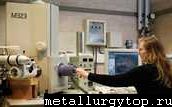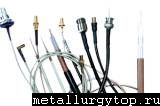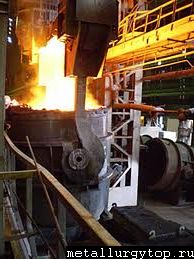Slice of History - A Knife Retrospective
 The first knives were most likely made of wood, bone and other perishable materials. These ancient tools were shaped by knapping, or percussive flaking of rock, such as obsidian and flint.
The first knives were most likely made of wood, bone and other perishable materials. These ancient tools were shaped by knapping, or percussive flaking of rock, such as obsidian and flint.
As advances in metallurgy were made, materials such as wood, stone, and bone blades were gradually succeeded by copper, bronze, iron, and eventually steel. During the Middle Ages, knives joined the fork and spoon as the prominent pieces of cutlery in the western world. As a result, much of the world's population was exposed to knives as a daily utensil and tool.
Today's knives come in many shapes and sizes but can be categorized between two types: fixed blade knives and folding, or pocket, knives. Blades may be serrated or plain, or even a combination of both. Some knives contain a tang, a portion of blade that extends into the handle.
Fixed Blade Knives
Unlike its earlier predecessors, blades of today can be manufactured from a variety of materials, each with its advantages and disadvantages. An alloy of carbon and iron, carbon steel is very sharp and is easy to sharpen, but is susceptible to rust and stains. An alloy of iron, chromium, nickel, and molybdenum, stainless steel is not able to take on quite as sharp an edge as carbon steel, but it is highly resistant to corrosion. Intended to combine the best attributes of carbon steel and stainless steel, high carbon stainless steel blades are able to maintain a sharp edge and do not discolor or stain.
Laminate blades are created by a layer of harder, more brittle steel that is sandwiched between an outer layer of softer, tougher stainless steel to reduce chances of corrosion. Pattern–welding is another technique similar to laminate construction, which welds various steel types in layers, but then the stock is manipulated to create patterns in the steel. A lighter, more wear resistant metal, titanium is more flexible than steel, although it is unable to take as sharp an edge. However, carbides in the titanium alloy allow them to be heat–treated to a sufficient hardness. Largely immune to corrosion, ceramic blades are very hard and lightweight blades, able to maintain a sharp edge for years at a time with little or no maintenance. Ceramic blades may only be sharpened on silicon carbide sandpaper and some grinding wheels.
Forging & Stock Removal
Steel blades are commonly shaped by forging or stock removal. Blades are forged by heating a single piece of steel and shaping the metal while it is hot with a hammer or press. Stock removal blades are shaped by grinding the removing metal. After shaping with both methods, the blade must be heat treated, which involves heating the steel above its critical point and then quenching the blade to harden it. Once the blade is hardened, it is tempered to remove stresses and toughen the blade. Forging tends to be used for more high–end product cutlery lines.
Folding Knives
Connected to the handle through a pivot, the folding knife's blade is able to fold into the handle. Folding knives are typically created with a locking mechanism to prevent the blade from accidentally closing on the user's hand.
Found most commonly on traditional pocket knives, a slip joint holds the open blade in place by a spring device that allows the blade to fold if a certain amount of pressure is applied. A lockback includes a pivoted latch connected to a spring, and can be disengaged only by pressing the latch down to release the blade. Other types of popular locking features include: liner lock, frame lock, button lock, and axis lock.
Life of the Knife
Throughout history, knives have served various purposes – from cutlery to weaponry. Here are a few of its uses:
Knives as Weapons
Bayonet Knife – a knife–shaped fighting weapon attached to the muzzle of a rifle or similar weapon.
Combat Knife – any knife mainly intended for fighting
Trench Knife – Purpose–made or improvised knife intended for close–quarter fighting, particularly in trench warfare.
Shiv – prevalent in prisons, this knife is a crudely homemade weapon out of everyday materials
Switchblade – A knife with a folding blade that springs out of the grip when a button or lever on the grip is pressed
Knives as Tools
Electrician's Knife – An insulated knife used to cut electrical wire
Diver's Knife – A standard part of diving dress, the diver's knife has been adapted for use in diving and water sports
Hunting Knife – Used to dress large game
Pocket Knife – Also known as a multi–tool, the pocket knife contains several blades, as well as other tools
Utility Knife – Used for cutting sheet materials, including moving boxes, cardboard boxes and shipping and receiving containers
SafeCutters distributes the Klever Kutter and Klever Koncept, two of the safest utility knives available. Klever Kutter virtually eliminates the risk of workplace injuries, while the permanently shielded blade protects packaged products. It has been approved by the Department of Homeland Security for safe air transport.





Бизнес в рейтингах
 В конце сентября с разницей в несколько дней вышли два основных и наиболее авторитетных рейтинга лидеров отечественной экономики. Именно на основе журналов Forbes «200 крупнейших непубличных компаний„ и ‹Финанс› “500 крупнейших компаний России» можно проследить за тенденциями в российской экономике. И они, надо сказать, сильно изменились с момента начала кризиса.
В конце сентября с разницей в несколько дней вышли два основных и наиболее авторитетных рейтинга лидеров отечественной экономики. Именно на основе журналов Forbes «200 крупнейших непубличных компаний„ и ‹Финанс› “500 крупнейших компаний России» можно проследить за тенденциями в российской экономике. И они, надо сказать, сильно изменились с момента начала кризиса.
Как отмечают составители, впервые суммарная выручка участников списков «»Forbes–200„„ и ““Финанс–500«» оказалась ниже, чем годом раньше, а большинство игроков (около 60% списка Forbes) показали заметное снижение показателей, вплоть до результатов 2007 года. К тому же принадлежность к госсектору и ее отсутствие в рейтингах сразу показали все масштабы монополизированности в стране.
Надо сказать, что значительная часть компаний, ранее занимавших заметные позиции в рейтингах, попросту перестали существовать. Тем не менее, комментирующие рейтинги эксперты отмечают, что компании–лидеры отраслей осознали уроки кризиса и сейчас не только тщательно планируют краткосрочные действия, но и стремятся заглянуть в будущее. Многие специалисты ожидают, что благодаря продуманной политике ведения бизнеса, результаты 2010 года у лидеров отраслей окажутся выше, чем могли бы быть.
Как указывает Forbes, кризис отбросил «закрытую» экономику назад. Рейтинг непубличных компаний России Forbes составляет в седьмой раз, и впервые суммарная выручка участников списка оказалась ниже, чем годом раньше. За 2009 год этот показатель упал на 9,6% – с 7,5 трлн рублей до 6,8 трлн рублей, откатившись примерно до уровня 2007 года.
Отражает ли этот спад ситуацию в экономике, задаются вопросом эксперты издания? Лишь отчасти – в действительности дела обстоят даже хуже. В список «Forbes 200„ не входят крупнейшие публичные компании, а это практически все российские сырьевые гиганты от „Газпрома„ до “Норильского никеля“, их выручка упала гораздо сильнее. У крупнейших публичных и государственных компаний суммарные обороты снизились на 20%. И это мы увидим далее на примере рейтинга “Финанс».
Кризис проредил список Forbes: в 2009 году перестали существовать 11 компаний из прошлогоднего рейтинга (годом ранее было всего четыре таких случая). Наибольшие потери понесла металлургия и торговля. Обанкротилась Группа ЭСТАР Вадима Варшавского, под внешнее управление попала металлургическая промышленная группа МАИР, развалилось объединение «Русэлектрокабель„. В торговой сфере обанкротились сеть магазинов электроники „Мир„ и торговавшая фруктами компания Sunway, розничная сеть “Патэрсон“ была поглощена компанией X5 Retail Group, прекратил существование торговый дом “Топливное обеспечение аэропортов».
Им на смену приходят предприятия, более приспособленные к новым условиям ведения бизнеса в России. Характерно появление в первой десятке рейтинга компании «Стройгазмонтаж» братьев Аркадия и Бориса Ротенбергов, близких знакомых Владимира Путина. Выручка этой многопрофильной компании, существенная часть бизнеса которой – обслуживание подрядов «Газпрома», за кризисный год выросла с 54 млрд рублей до 100 млрд рублей.
В результате всех перемещений и снижения прибыли, стоимость входного билета в "клуб–200" крупнейших частных компаний России снизилась на 2,8 млрд рублей, до 7,9 млрд рублей. Это позволило попасть в него нескольким компаниям, представляющим IT–индустрию. Впервые в рейтинг вошли борец с компьютерными вирусами «Лаборатория Касперского«, разработчик и дистрибьютор компьютерных программ фирма "1С» и системный интегратор »Ай–Теко".
В первую десятку рейтинга Forbes попали Комплексные энергетические системы, ГК «Таиф„, ГК “Мегаполис», УГМК, Мегафон, Металлоинвест, СУЭК, Стройгазконсалтинг, Русснефть, Стройгазмонтаж.
Что касается рейтинга "Финанс–500«. Его объемность определяется как раз таки вхождением в него не государственных структур. И тут вся сложность состояла в том, чтобы определить целостность структур, учитывая всевозможные дочки и аффилированные предприятия. Вместе с тем, как и в рейтинге Forbes, впервые за всю историю составления »Финанс–500", совокупная выручка компаний упала.





Something About Sintered Metal Powder
 According to the forms of friction on work, bearings can be divided into rolling bearings and plain bearings. And the latter can further be divided into self–lubricating bearings, oil lubricated bearings and gas lubricated bearings.
According to the forms of friction on work, bearings can be divided into rolling bearings and plain bearings. And the latter can further be divided into self–lubricating bearings, oil lubricated bearings and gas lubricated bearings.
Bearings that produced by powder metallurgy method generally known as powder metallurgy self–lubricating bearings, sintered metal powder bearings, and sintered metal bearings.
Powder metallurgy oil–impregnated bearing is a kind of alloy product. When the shaft rotates, due to the friction between the shaft and bearings, bearing temperature will be increased and there will be a pump suction function. As a result, oil will leak on the internal diameter of the friction surface. When the shaft stops rotating, the oil will be back to the inside of bearings. It is the working process of self–lubricating bearings. Therefore, these products have less consumption of lubrication oil. They can operate in a long period of time without the offering of external oil. They are especially suitable for some special places.
Oil–impregnated bearings have many advantages. Firstly, they are less noisy than the rolling bearings. The vibration is small. It is easy to produce them. They do not require special oil supply. Besides, they have flexible shape design. They can be manufactured in a large amount. The prices are comparatively low.
At the same time, they also carry a lot of disadvantages. Because they are sliding bearings, their friction coefficient is bigger than the rolling bearings'. Besides, costs will be high if they are produced in a small scale.
It should be clarified that the name of the oil–impregnated bearings does not mean that they do not require additional oil. It just shows that they have already carried a certain amount of oil. And it is unnecessary to add a lot of oil to them.
Sintered metal powder bearing has become essential part for the development of the automotive, appliance, audio equipment, office equipment, precision machinery. Currently, according to bearing usage, the main transport machinery such as cars account for about 41%. And the industrial machinary like office machinery take up about 21%. Other applications account for about 5%.
Except for the important usage of the sintered metal powder bearing, the amount of bearing material is increased gradually. Meanwhile, it plays a more and more important role in the manufacturing of machinery. Now, sintered metal powder bearing material is not only the substitute for some traditional bearing alloys, but also a kind of important structural material in the mechanical manufacturing industry.
SeekPart is the global B2B platform in the industry of mechanical parts. SeekPart aggregates the trade leads in this area, and our ultimate target is to benefit the buyers and sellers of mechanical parts by utilizing these leads through our online tools.




